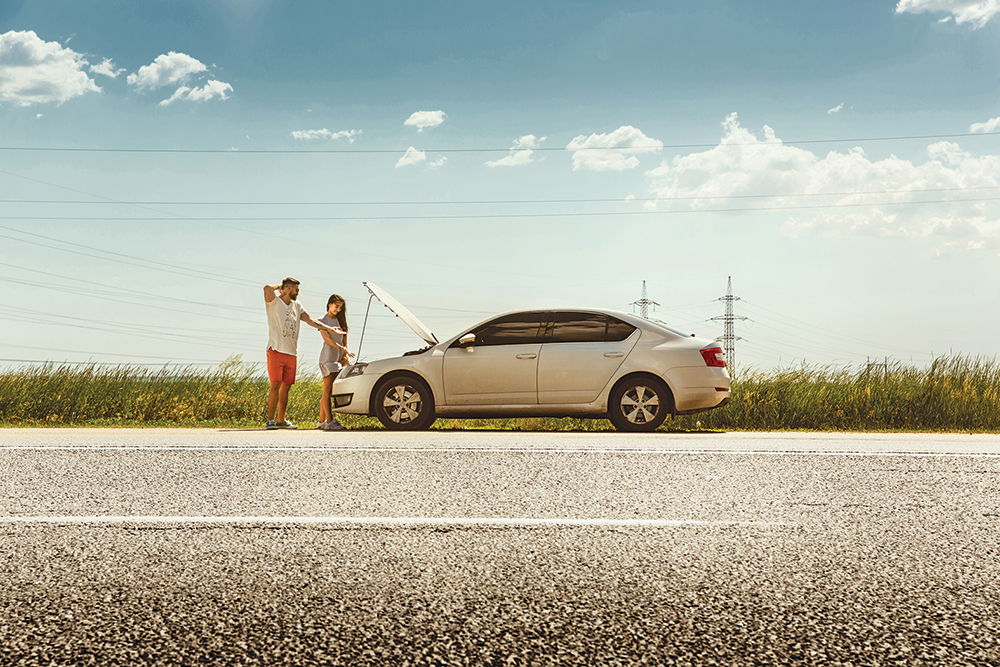 Every journey behind the wheel can come with its share of surprises, and unfortunately, not all of them are pleasant.
Every journey behind the wheel can come with its share of surprises, and unfortunately, not all of them are pleasant.
Whether it’s a sudden breakdown, an accident, or an overheating engine, being prepared for the unexpected is crucial for every driver.
In this edition of our automotive column, we delve into the essentials of car breakdown safety and what to do in common emergency situations.
1. The Breakdown Blues:
Car breakdowns can happen to even the most meticulously maintained vehicles. When faced with a sudden breakdown, follow these steps to ensure your safety and the safety of others:
• Pull over safely: If possible, move your vehicle to the shoulder of the road or a side street. Turn on your hazard lights to alert other drivers of your situation. Turn on your parkers in poor light.
• Exiting your vehicle: Always check for traffic and leave from the passenger side if necessary. If it’s safe to leave your vehicle stand behind the safety barrier. Stay in your vehicle with your seatbelt on if it’s not safe to leave.
• Assess the situation: Once you are safe, assess the situation. Can you identify the issue? If it’s a minor problem like a flat tyre, you might be able to address it yourself with the help of a spare tyre and jack.
• Call for assistance: If you’re unable to resolve the issue or if it’s a major breakdown, call for roadside assistance or emergency services. Keep important numbers, such as your insurance and local tow services, stored in your phone.

2. Collision Caution:
No one plans for an accident, but knowing what to do in the aftermath is crucial:
• Ensure safety: Move your vehicle to a safe location if possible. Turn on your hazard lights, and if it’s dark, use flares or reflective triangles to increase visibility.
• Check for injuries: Assess yourself and passengers for injuries. If anyone is injured, call emergency services immediately.
• Exiting your vehicle: Always check for traffic and leave from the passenger side if necessary. If it’s safe to leave your vehicle stand behind the safety barrier. Stay in your vehicle with your seatbelt on if it’s not safe to leave.
• Exchange information: Exchange contact and licence information with the other parties involved. Take photos of the scene, including vehicle damage and the number plates of all vehicles.
• File a police report: In NSW the police need to be called if someone is injured or a vehicle needs to be towed.
• Take down notes and draw diagrams: As soon as possible after the accident write an account of what happened and a diagram while it is still fresh in your mind. This will be helpful later when contacting your insurance company and to help establish fault.
3. Battling the Heat:
An overheating engine can be a sign of trouble, but taking the right steps can prevent further damage:
• Pull over: If you notice your engine temperature rising, pull over in a safe location immediately. As above only leave the vehicle if it is safe to do so.
• Turn off the engine: Let the engine cool down by turning it off. Pop the bonnet, but be cautious as it might be hot.
• Check coolant levels: Once the engine has cooled, this can take up to one hour, check the coolant levels. If they’re low, add coolant or water if necessary. Keep in mind that the radiator cap should only be opened when the engine is cool.
• Seek professional help: If the engine continues to overheat, seek the assistance of a professional mechanic.
4. Be prepared:
• Make sure you have everything you may need in case of an emergency. Do you have a first aid kit?
• Having some spare water, a torch, a blanket and some muesli bars might be a life saver in the case of a breakdown or any other delays you may experience on a trip.
Being prepared for the unexpected on the road can make all the difference in ensuring your safety and the safety of those around you. Stay informed, stay vigilant, and always prioritise safety when facing car breakdowns or emergencies.
Have a safe and Merry Christmas, we look forward to sharing more tips in the New Year!
